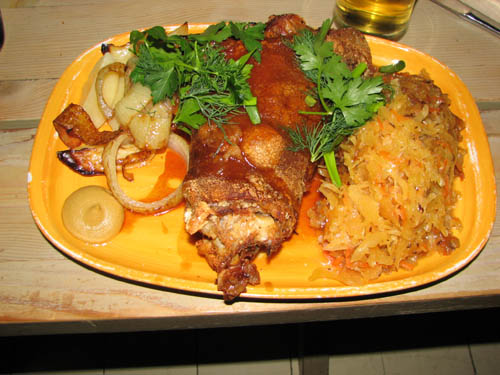Introduction: Estonian cuisine in context
Estonian cuisine is a reflection of the country’s history, geography, and culture. Located on the eastern coast of the Baltic Sea, Estonia has been influenced by its neighbors, including Russia, Sweden, Germany, and Finland. Estonian cuisine is characterized by simple yet hearty dishes that are often made with local ingredients. The country’s cuisine has evolved over time, and today, it is a blend of traditional and modern cooking styles.
Historical and cultural influences on Estonian cuisine
Estonia has a long history of foreign occupation, which has left its mark on the country’s cuisine. Russian, Swedish, and German influences are evident in traditional Estonian dishes, such as herring dishes, sauerkraut, and meat stews. In addition, Estonia’s cuisine has been influenced by its agricultural roots, with dishes made from local ingredients such as potatoes, rye, and barley.
The role of geography in Estonian cuisine
Estonia’s location on the eastern coast of the Baltic Sea has played a significant role in the development of its cuisine. Fish dishes, such as smoked or salted herring, are popular in coastal areas, while inland regions are known for hearty meat stews and soups. Estonia’s forests and meadows are also an important source of ingredients, including wild berries, mushrooms, and game.
Regional differences in traditional Estonian dishes
While there are many traditional Estonian dishes that are enjoyed throughout the country, there are also regional variations. In the island of Saaremaa, for example, black bread is a staple food, and many dishes are made with local ingredients such as juniper berries and smoked fish. In the northeastern region of Estonia, traditional dishes such as pork jelly and blood sausages are popular.
Local ingredients and their impact on Estonian cuisine
Local ingredients play an important role in Estonian cuisine. Potatoes, rye, and barley are staples in many dishes, while berries, mushrooms, and game are used in seasonal dishes. In addition, Estonia’s dairy products, including cheese and sour cream, are highly-regarded. Local ingredients give Estonian cuisine its unique flavor, and many traditional dishes have been passed down through generations.
Estonian cuisine across the seasons
Estonian cuisine is closely tied to the seasons, with different dishes served during different times of the year. In the summer, fresh berries and vegetables are used in salads and desserts, while in the winter, hearty stews and soups are popular. In addition, many traditional dishes are associated with holidays and special occasions, such as Christmas and Midsummer’s Day.
Modern twists on traditional Estonian dishes
While traditional Estonian dishes remain popular, many chefs are putting a modern twist on these classics. For example, some restaurants are serving dishes made with local ingredients in new and innovative ways, while others are incorporating international flavors into traditional dishes. These modern twists on Estonian cuisine reflect the country’s evolving culinary landscape.
Conclusion: The diversity of Estonian cuisine
Estonian cuisine is a reflection of the country’s history, geography, and culture. While there are traditional dishes that are enjoyed throughout the country, there are also regional variations that give Estonian cuisine its unique flavor. Local ingredients and seasonal dishes play an important role in Estonian cuisine, while modern twists on traditional dishes reflect the country’s evolving culinary landscape. Whether you’re a fan of hearty stews or fresh salads, there’s something for everyone in Estonian cuisine.

